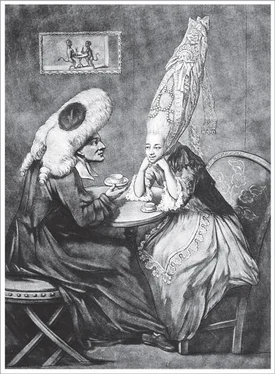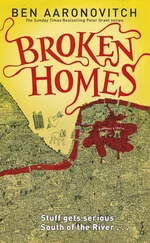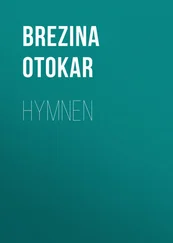Bill Bryson - At Home
Здесь есть возможность читать онлайн «Bill Bryson - At Home» весь текст электронной книги совершенно бесплатно (целиком полную версию без сокращений). В некоторых случаях можно слушать аудио, скачать через торрент в формате fb2 и присутствует краткое содержание. Жанр: Старинная литература, на английском языке. Описание произведения, (предисловие) а так же отзывы посетителей доступны на портале библиотеки ЛибКат.
- Название:At Home
- Автор:
- Жанр:
- Год:неизвестен
- ISBN:нет данных
- Рейтинг книги:4 / 5. Голосов: 1
-
Избранное:Добавить в избранное
- Отзывы:
-
Ваша оценка:
- 80
- 1
- 2
- 3
- 4
- 5
At Home: краткое содержание, описание и аннотация
Предлагаем к чтению аннотацию, описание, краткое содержание или предисловие (зависит от того, что написал сам автор книги «At Home»). Если вы не нашли необходимую информацию о книге — напишите в комментариях, мы постараемся отыскать её.
At Home — читать онлайн бесплатно полную книгу (весь текст) целиком
Ниже представлен текст книги, разбитый по страницам. Система сохранения места последней прочитанной страницы, позволяет с удобством читать онлайн бесплатно книгу «At Home», без необходимости каждый раз заново искать на чём Вы остановились. Поставьте закладку, и сможете в любой момент перейти на страницу, на которой закончили чтение.
Интервал:
Закладка:
Fortunately, the newcomers—the English, as we may as well call them from now on—brought a second kind of building with them, much less numerous but ultimately far more important. These buildings were much larger than grubenhäuser, but that was about as much as could be said for them. They were simply large barnlike spaces with an open hearth in the middle. The word for this kind of structure was already old in 410, and it now became one of the first words in English: hall .
Practically all living, awake or asleep, was done in this single large, mostly bare, always smoky chamber. Servants and family ate, dressed, and slept together—“a custom which conduced neither to comfort nor the observance of the proprieties,” as J. Alfred Gotch noted with a certain clear absence of comfort himself in his classic book The Growth of the English House (1909). Through the whole of the medieval period, till well into the fifteenth century, the hall effectively was the house, so much so that it became the convention to give its name to the entire dwelling, as in Hardwick Hall or Toad Hall.
Every member of the household, including servants, retainers, dowager widows, and anyone else with a continuing attachment, was considered family—they were literally familiar, to use the word in its original sense. In the most commanding (and usually least drafty) position in the hall was a raised platform called a dais, where the owner and his family ate—a practice recalled by the high tables still found in colleges and boarding schools that have (or sometimes simply wish to project) a sense of long tradition. The head of the household was the husband —a compound term meaning literally “householder” or “house owner.” His role as manager and provider was so central that the practice of land management became known as husbandry. Only much later did husband come to signify a marriage partner.
Even the very grandest homes had only three or four interior spaces—the hall itself, a kitchen, and perhaps one or two side chambers, known variously as bowers, parlors, or chambers, where the head of the house could retire to conduct private business. By the ninth or tenth century, there was often a chapel, too, though this tended to be used as much for business as for worship. Sometimes these private rooms were built on two stories, with the upper—called a solar—reached by a ladder or very basic stairway. Solar sounds sunny and light, but in fact the name was merely an adaptation of solive , the French word for floor joist or beam. Solars were simply rooms perched on joists, and for a long time they were the only upstairs room that most houses afforded. Often they were barely more than storerooms. So little did people think of rooms in the modern sense that the word room , with the meaning of an enclosed chamber or distinct space, isn’t recorded in English until the time of the Tudors.
Society consisted principally of freemen, serfs, and slaves. Upon the death of a serf the lord was entitled to take a small personal possession, such as an article of clothing, as a kind of death duty. Often peasants only owned one main item of apparel, a type of loose gown known as a cotta (which eventually evolved into the modern coat ). The fact that that was the best that a peasant had to offer, and that the lord of the manor would want it, tells you about all you need to know about the quality of medieval life at many levels. Serfdom was a form of permanent bondage to a particular lord, and often it was offered as a religious declaration—an act that must have dismayed more than a few offspring, for serfdom, once declared, extended in perpetuity to all the declaring party’s descendants. The principal effect of serfdom was to remove the holder’s freedom to move elsewhere or marry outside the estate. But serfs could still become prosperous. In the late medieval period, one in twenty owned fifty acres or more—substantial holdings for the time. By contrast, freemen, known as ceorls , had freedom in principle but often were too poor to exercise it.
Slaves, often rivals captured in wartime, were pretty numerous—one estate listed in the Domesday Book (the land survey commissioned by William the Conqueror in 1086) had more than seventy of them. However, slavery from the ninth to eleventh centuries in England was not quite the kind of dehumanizing bondage we think of from more modern times, as in the American South, for instance. Although slaves were property and could be sold—and for quite a lot: a healthy male slave was worth eight oxen—slaves were able to own property, marry, and move about freely within the community. The Old English word for a slave was thrall , which is why when we are enslaved by an emotion we are enthralled.
Medieval estates were often highly fragmented. One eleventh-century thegn (or thane, that is, a free retainer) named Wulfric had seventy-two properties all over England, and even smaller estates tended to be scattered. Medieval households were, in consequence, forever on the move. They were also often very large. Royal households could easily have five hundred servants and retainers, and important peers and prelates were unlikely to have less than a hundred. With numbers so substantial, it was as easy to take the household to food as it was to bring food to the household, so motion was more or less constant, and everything was designed to be mobile (which is why, not incidentally, the French and Italian words for furniture are meubles and mobilia , respectively). So furniture tended to be sparing, portable, and starkly utilitarian, “treated more as equipment than as prized personal possessions,” to quote the architect and author Witold Rybczynski.
Portability also explains why many old chests and trunks had domed lids—to throw off water during travel. The great drawback of trunks, of course, is that everything has to be lifted out to get at things at the bottom. It took a remarkably long time—till the 1600s—before it occurred to anyone to put drawers in and thus convert trunks into chests of drawers.
In even the best houses, floors were generally just bare earth strewn with rushes, harboring “spittle and vomit and urine of dogs and men, beer that hath been cast forth and remnants of fishes and other filth unmentionable,” as the Dutch theologian and traveler Desiderius Erasmus rather crisply summarized in 1524. New layers of rushes were laid down twice a year normally, but the old accretions were seldom removed, so that, Erasmus added glumly, “the substratum may be unmolested for twenty years.” The floors were in effect a very large nest, much appreciated by insects and furtive rodents, and a perfect incubator for plague. Yet a deep pile of flooring was generally a sign of prestige. It was common among the French to say of a rich man that he was “waist deep in straw.”
Bare earth floors remained the norm in much of rural Britain and Ireland until the twentieth century. “The ‘ground floor’ was justly named,” as the historian James Ayres has put it. Even after wood or tile floors began to grow common in superior homes, at about the time of William Shakespeare, carpets were too precious to be placed underfoot. They were hung on the walls or laid over tables. Often, however, they were kept in chests and brought out only to impress special visitors.
Dining tables were simply boards laid across trestles, and cupboards were just what the name says—plain boards on which cups and other vessels could be arrayed. But there weren’t many of those. Glass vessels were rare, and diners were generally expected to share with a neighbor. Eventually cupboards were incorporated into rather more ornate dressers, which have nothing to do with clothing but rather with the preparation, or dressing, of food.
Читать дальшеИнтервал:
Закладка:
Похожие книги на «At Home»
Представляем Вашему вниманию похожие книги на «At Home» списком для выбора. Мы отобрали схожую по названию и смыслу литературу в надежде предоставить читателям больше вариантов отыскать новые, интересные, ещё непрочитанные произведения.
Обсуждение, отзывы о книге «At Home» и просто собственные мнения читателей. Оставьте ваши комментарии, напишите, что Вы думаете о произведении, его смысле или главных героях. Укажите что конкретно понравилось, а что нет, и почему Вы так считаете.












